Hoka One One Carbon X
Test Locations: Gunnison and Boulder, Colorado
Test Duration: ~150 miles
Stated Stack Height:
- Women’s: 30 mm (heel) / 25 mm (forefoot)
- Men’s: 32 mm (heel) / 27 mm (forefoot)
Stated Heel to Toe Drop: 5 mm
Stated Features:
- Single layer engineered mesh upper offers breathability across forefoot
- Embroidery reinforcement delivers a secure heel fit
- Gusseted tongue provides a lightweight mid-foot lockdown
- Early stage Meta-Rocker delivers an up-tempo ride
- Light and resilient PROFLY X technology provides both a soft and propulsive experience
- Carefully positioned Carbon fiber plate curls under the lateral toes to deliver a smooth transition through the gait cycle
- Wider forefoot platform provides support and stability along with an accommodating and comfortable fit
- Rubberized foam outsole offers a lightweight, responsive, yet durable ground contact
MSRP: $180.00
Size Tested: Women’s 8
Stated Weight Per Shoe: 204 g / 7.2 oz
Blister Measured Weight per Shoe (US Women’s size 8): 204 g / 7.20 oz
Reviewer: 5’9”, 115 lbs

Intro
The Hoka Carbon X was released in May of 2019 at the brand’s “Project Carbon X” event where Hoka’s ultramarathon runners attempted to break the 100k and 50-mile world records. With a carbon-fiber plate, dramatically rockered sole profile, and minimal upper, the Carbon X is specifically designed to offer an efficient and “propulsive” ride on the road. We’re always wary of claims about any piece of gear making you drastically faster, but it’s worth noting that, during Project Carbon X, Hoka athlete Jim Walmsley set the 50-mile world record ( 4:50:08) in the Carbon X shoe.
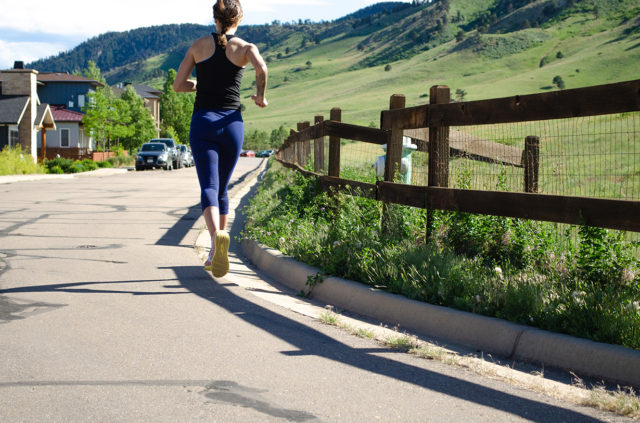
Given that, it’s not a huge surprise that the Carbon X has been getting a lot of hype. But how does the Carbon X work for those of us who are not elite road runners, how does it perform on both fast and more “average” runs, and how does the shoe feel compared to more traditional road shoes? Here’s my take:
Fit
As with any shoe, we recommend trying on the Carbon X before buying, if you can. With that being said, I can talk about how it fits my feet. For reference, I have fairly narrow feet with larger bunions near my big toe.
When I first slid my foot into the Carbon X, I noted that the shoe felt very different than other Hoka shoes I’ve used, including the Clifton 6, Challenger ATR 5, and Speedgoat 4. Part of this is due to the general fit, and part is due to the Carbon X’s thin upper and very rockered profile.

I have never had any issues with Hoka shoes feeling too narrow through the midfoot, and the Carbon X was consistent with this. It feels slightly narrower than the Clifton 6 and Speedgoat 4, but the Carbon X’s upper material also felt stretchier and more forgiving than those other models.
Despite its narrow midfoot, the Carbon X’s forefoot is a bit wider and allowed for a bit more room for toe-splay than the Clifton 6 and Challenger ATR 5, but was not so wide that my foot felt loose within the Carbon X.
Combined with its upper, the result of all this was a very snug, yet comfortable fit. I did have to stop and tighten the laces during my first run since the laces stretched a bit (something I usually notice with Hoka shoes), but as I’ll discuss in more detail below, the Carbon X’s upper has done a very good job of keeping my feet snugly in place.
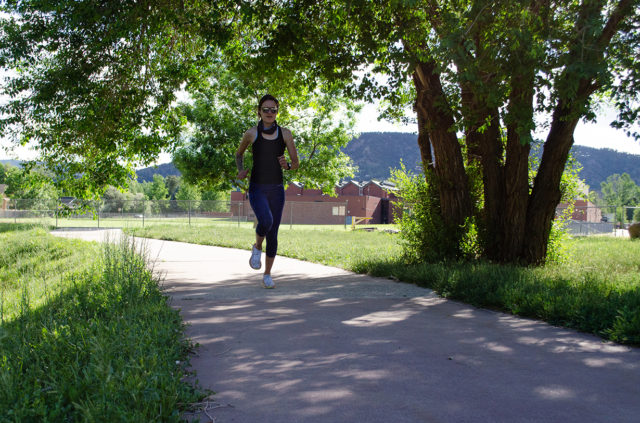
I used the Carbon X in my standard US Women’s size 8, which left about a half-inch of space in front of my toes. While I potentially could have sized down a half-size, the upper may have been a bit too tight if I had. With that in mind, if you’re okay with a tight upper and minimal room in front of my toes, it might be worth trying the Carbon X a half-size smaller than what you normally wear in Hokas. For me, the size 8 Carbon X fit well and did not cause any issues, other than some fabric folding near my big toe where there was that bit of extra room.
Weight (and Comparisons)
For what it is, the Carbon X is quite light, but it’s not the absolute lightest shoe on the market. Despite its race-oriented design, the Carbon X is still a fairly big shoe with a 30 / 25 mm stack height, so this shouldn’t come at a huge surprise. But was its weight really an issue? I would say no. It’s still quite light for its size and everything else about it makes it feel very fast.
For reference, here is how the Hoka Carbon X’s stated weight compares to some other race-oriented shoes that also feature carbon plates. We’ve also included the stated weights for the Altra Torin 4.5 and Hoka Clifton 6, which have similar stack heights to the Carbon X but that are not nearly as race-specific as the others. Apart from the Brooks Hyperion and Nike VaporFly Next %, these stated weights are for the women’s versions.
178 g / 6.3 oz — Saucony Endorphin Pro
195.6 g / 6.9 oz — Brooks Hyperion Elite (Unisex)
200 g / 7.1 oz — Nike VaporFly Next % (Unisex)
204 g / 7.2 oz — Hoka Carbon X
210 g / 7.4 oz — Hoka Clifton 6
210 g / 7.4 oz — Altra Torin 4.5 Plush
Given its stack height, the Carbon X is very lightweight. But for those who don’t need or want that much cushioning underfoot, lower-stack options like the Hoka Evo Rehi (164.4 g / 5.8 oz) or Saucony Fastwitch 9 (144.6 g / 5.1 oz) are notably lighter.
Upper
The Carbon X’s upper is constructed of a thin, single-layer mesh with a more open knit around the toe box that equates to excellent breathability. It also features a gusseted tongue that does a good job of locking down my midfoot without much extra bulk.

Overall, the Carbon X’s upper feels much thinner than the uppers in most shoes I’ve used, including the Clifton 6, which makes sense for the purpose of this speed-oriented shoe. But in addition to being thinner, the Carbon X’s upper also fits much tighter overall than the Clifton 6. This snug fit throughout made the extra half-inch of space in front of my toes more noticeable than in a looser-fitting shoe, making me think the shoe was maybe a half-size too large because of the length. But once I had the Carbon X laced up, the upper kept my feet very secure.
The heel area of the Carbon X has embroidered reinforcements designed to help lock in your heel without a lot of added material. This does make it a bit difficult to initially put on the shoe, but once I get it on, the Carbon X does feel very secure around my heel. There’s also a large loop on the heel to help you pull on the shoe, which I found to be very useful.
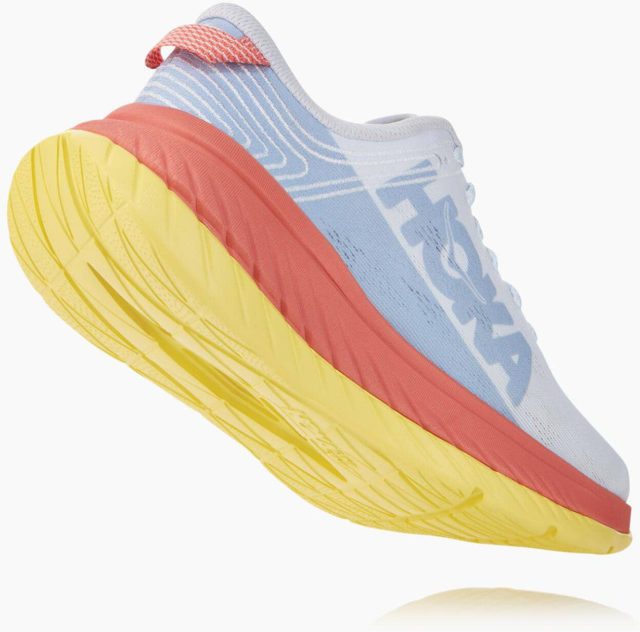
Even on one of my typical runs that spans 6 miles with a 1200-ft descent, I had no issues with heel slippage in the Carbon X. Similarly, when running up steep climbs like Olde Stage Road in Boulder, my feet haven’t slipped inside the shoe whatsoever. My only complaint is that the Carbon X’s laces are long and come undone rather easily (double-knotting them and tucking them in near my ankle helped prevent this).
Although I did initially think they were a bit too big due to the overall length of the platform, the Carbon X’s upper has made for a stable, snug fit throughout my time in the shoe. After about 150 miles in them, the uppers are holding up very well with minimal signs of wear, which is a relief as durability is often the downfall of many race-oriented shoes (more on that below).
Midsole & Cushioning
Unlike some of Hoka One One’s more “regular” road shoes, the Carbon X is very stiff. The Carbon X’s carbon plate runs through most of the shoe and curls under the toes to reportedly “deliver a smooth transition through the gait cycle.” That carbon plate also simply makes the shoe’s midsole very stiff — it’s difficult to flex the shoe in any direction. But, when paired with the very rockered profile of the Carbon X’s midsole, this makes the shoe feel surprisingly smooth and unsurprisingly fast when running.
As mentioned above, the Carbon X features a more dramatic version of Hoka’s now-classic rockered sole profile, which makes the midsole of the Carbon X have a more drastic “U-like” shape than most other shoes. The idea is the same as with other rockered shoes (to promote a faster, more natural-feeling stride through each step), it’s just taken to another level with the Carbon X.
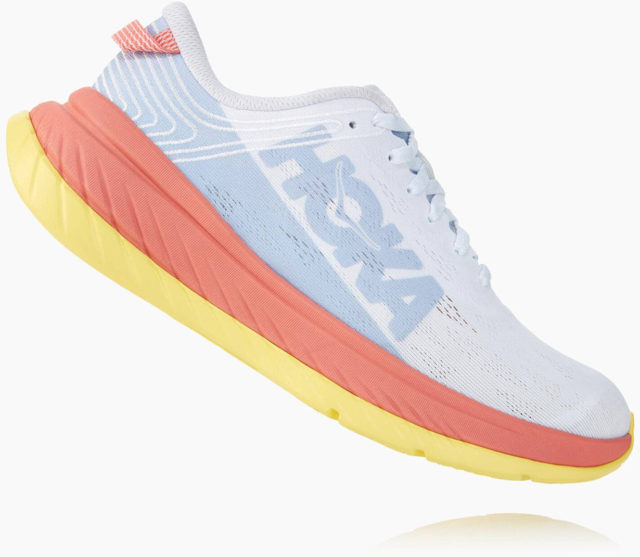
At first, the Carbon X’s level of rocker felt a bit excessive for my shorter, slower training runs, especially since I was easing back into running after a stress fracture this winter. Because it encourages a faster, rolling gate, I had a harder time running slowly in the Carbon X, which was not ideal at the time.
But the more I’ve run in the shoe, and especially the faster I’ve been running in it, the more I’ve noticed how it encouraged a smoother and quicker heel to toe transition, which helped me to get my legs turning over at a faster rate. At the same time, I didn’t often feel like it was forcing me into too fast of a stride, which is something our other reviewers have noted on some of Hoka’s very rockered Trail shoes.
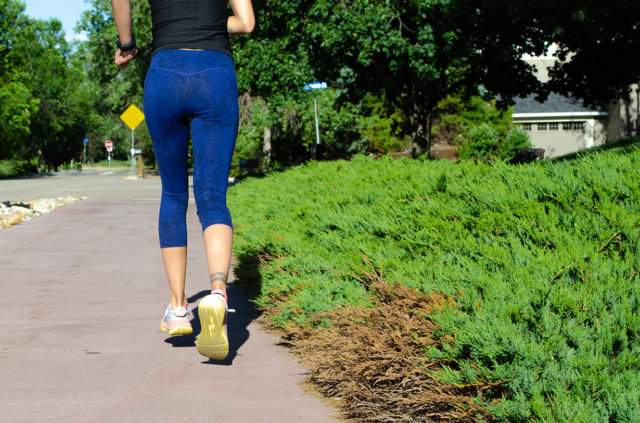
Carbon plates and rocker aside, the Carbon X’s ProFly X midsole foam has provided just enough cushioning to help prevent leg and foot fatigue for me, but by no means is this shoe “plush.” The Carbon X is one of the least-cushioned-feeling Hokas I have ever used, despite it having a pretty big stack height at 30 mm / 25 mm for the women’s version. This is not a plush, recovery-oriented shoe — it’s designed to go fast. But the Carbon X is also not some super minimal, stiff, XC-flat sort of shoe, and its rockered profile and thick (but not plush) cushioning do offer some relief on long, fast runs. This is one thing that makes it stand out from many of the race shoes out there.
Outsole
The Carbon X’s outsole is very much designed for the road. Rather than a full-rubber outsole, it uses what Hoka calls a “rubberized foam” material with some subtle grooves and doesn’t feature anything that I’d really call a “lug.” The result is a very efficient ride on the road. The outsole of the Carbon X is smoother with less of a tread than other road shoes I’ve used, including the Clifton 6 and New Balance 1080v9. All that said, I’ve had no issues with the Carbon X’s outsole so far — the shoe felt stable, efficient, and grippy enough on pavement, cement paths, and dirt roads.

If you are looking for a road shoe that can travel well between dirt and pavement, the Clifton X can do that if you’re not running on trails that are remotely technical, but that’s really not what it’s designed to do. The dirt roads will cause the shoes to wear more quickly, but I did not note a huge performance difference on smooth dirt roads vs. pavement.
On the Road
When running in the Carbon X, I could not help but appreciate how smooth they felt, despite how stiff and efficient they are. As I noted above, the rockered sole helped to create a natural heel-to-toe motion, but also didn’t make me feel out of control on long, downhill runs.
I took the Carbon X on a variety of runs, ranging from flatter road runs through neighborhoods to long, 20+ mile runs up into the foothills. Regardless of the grade, The Carbon X performed consistently. As I mentioned before, I never took the shoe on any real trails, but I did take it on a few dirt roads. The smooth outsole unsurprisingly doesn’t offer much grip on inconsistent surfaces, but it hasn’t caused any issues on smooth dirt.
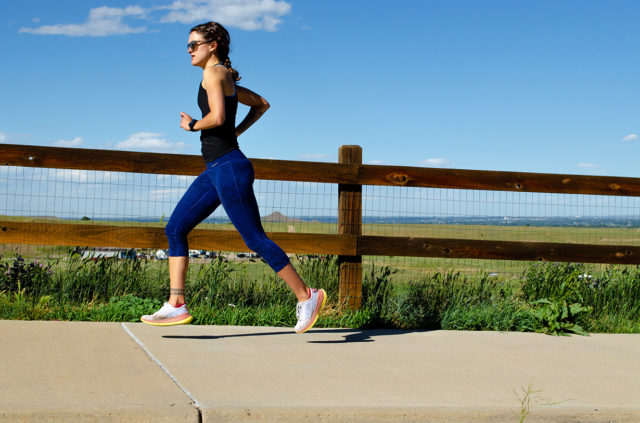
Given that the Carbon X was specifically designed to set records, it came as little surprise that my favorite runs in it were those where I was running fast. As I increased my cadence and tempo, the shoe felt better and better. While the Carbon X does work ok for slower recovery runs, it excels when you start to crank up the pace. The longest run I did in the Carbon X was 25 miles and I had zero hot spots or blisters and minimal foot fatigue when I finished. In my opinion, I think this shoe is a very strong option for a marathon or longer distances on the road.
I tend to strike more on my midfoot, but when I get fatigued I do find myself heel striking a bit more. The Carbon X does feel like it performs best when striking on the midfoot or forefoot, but it didn’t feel super awkward when I would find myself heel striking, just less efficient.
Compared to an everyday training shoe like the Clifton 6, the Carbon X has a very different feel. While the Clifton 6 is still pretty stiff, the Carbon X is even stiffer and less plush. Personally, I prefer the way the Carbon X performs and feels over the Clifton 6, especially for workouts or faster-paced runs. Even on days when I would cruise on the road at my more moderate pace (around 8:00 min/mile), the Carbon X felt comfortable and quick.

For somewhat faster-paced workouts, I would easily pick the Carbon X over the Clifton 6 due to how efficient and smooth the Carbon X feels when I start to push the pace. On the days when I wanted a more cushioned ride for the sake of my joints, I would pick the Clifton 6 due to its softer cushioning. But despite all the pro-athlete marketing surrounding it, I don’t personally think you need to be the fastest runner to appreciate the Carbon X for workouts or races, or potentially even for general runs where you want a faster-feeling shoe.
Durability
A pitfall of many race-specific shoes is their lifespan. For example, Brooks recommends using their Hyperion Elite for only 1-2 marathons (!). Hoka doesn’t say anything about a mileage limit for the Carbon X and I’ve so far run about 150 miles in the shoe. At this point, the upper isn’t showing any wear and the outsole still has a similar look to when I first got the shoe.
I have run in the Carbon X when it has been raining and when the road has had more gravel and grit, and I’ve taken the Carbon X on dirt roads mixed in during road runs. Despite the Carbon X’s niche, road-oriented design, these conditions have not caused any notable damage or wear so far, aside from some additional dirt on the upper.
I have been impressed with the overall durability of the shoe during my time in it, especially given the typically fragile nature of shoes in this niche category. With about 150 miles on the shoe, the midsole foam is starting to pack down a decent amount. That said, I don’t feel like it has considerably altered the way the shoe feels, with it now maybe just feeling a little bit less energetic / offering slightly less rebound. This could be a potential perk to having the carbon determining the stiffness of the shoe, rather than just the midsole foam, because even as the foam packs out, the shoe still feels stiff (especially with a shoe like the Carbon X, which has stiff midsole foam to begin with). If I had to guess, I think I could get another 100 miles in the Carbon X before feeling like I should retire it, but I will update this section if / when I notice serious performance deterioration in this shoe.
This being said, if you want to lengthen the life of any shoe designed for racing, it makes sense to minimize training in the shoe and use it predominantly for when you’re trying to go fast (especially with something like the Carbon X that costs a hefty $180). Personally, I think the Carbon X would be a solid option for up-tempo workouts or days on the road when you want to run a bit faster. But I would expect to need to replace these shoes more quickly than other trainers, which should generally be replaced between 300-600 miles, depending on the runner and shoe.
Who’s It For?
If you are in the market for a firm, fast, and efficient road shoe, the Carbon X offers a lot to like. While I doubt it’ll be the longest-lasting shoe, for those who prioritize speed, it may be worth it. Particularly for those doing road races around half-marathon-length and longer, the Carbon X is a very appealing option.
At $180, the Carbon X certainly isn’t cheap compared to most training shoes. That said, it comes in at a slightly lower price than some of the other high-end, race-specific shoes, which are often $200+. While the Carbon X has not caused quite as much of a buzz as the Nike ZoomX VaporFly Next%, the two brands claim that these two shoes offer many of the same benefits and the Carbon X is $70 cheaper.
While the Carbon X would be my pick for longer road races, I also liked it on shorter, faster-paced workouts. I think it stands out in the race-oriented category due to how well it supported my foot and prevented excessive fatigue, which could still be beneficial for some people on shorter races if they don’t mind a higher stack height.
As mentioned above, if you are looking for a more plush, softer, everyday training shoe, there are lots of better choices out there. Shoes with softer cushioning like the Hoka Clifton 6 and Hoka Rincon offer better impact absorption, at the cost of some efficiency. Those shoes also tend to last a bit longer (and do so at a less expensive price), which makes them more appropriate as trainers for a lot of people.
Finally, for whatever it’s worth, I think the Carbon X is one of the better looking Hokas. While it still has the brand’s signature, thicker outsole, it does not look as clunky as some of the other Hoka shoes.
Bottom Line
For all the hype that carbon-plated, race-specific shoes are getting, I was skeptical at first to try the Carbon X. I questioned whether it would really be noticeably better than more traditional shoes, and wondered if I would personally benefit from what Hoka claimed about its ultra-fast ride. But after 150 miles in it, I’ve been very impressed by both its fast, efficient ride and relative versatility.
The Carbon X offers a precise, secure fit thanks to its snug upper and fairly low-volume shape, holding my feet in place regardless of the grade I was running up or down. And while some shoes in this class are literally designed to be retired after a single race, the Carbon X has held up well and shows minimal signs of wear after the 150 miles I have put on it. Regardless of whether I was doing short, fast workouts or 25-mile runs, my feet came out of the Carbon X with no new blisters, hot spots, or excessive foot fatigue.
Given all that, I would definitely pick the Carbon X if I were to run a road ultra — I think there are some valid reasons behind the hype of this shoe. Does everyone need to go out and drop $180 on it? No. But for those who specifically want a very efficient, fast shoe — and who don’t want a super minimal, unforgiving one — the Carbon X is worth a try.



Just coming here to say Maddie and Gordon write awesome shoe reviews.
Thank you!
My feet get sore after 8 asphalt miles in Cliftons. No soreness with Mafate 3’s. I do not think Carbon Xs are in my near future…but i really like the fit description. Wider toe box. Awesome.